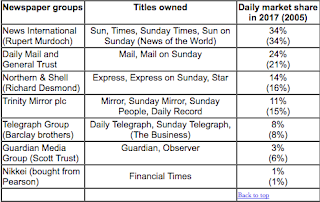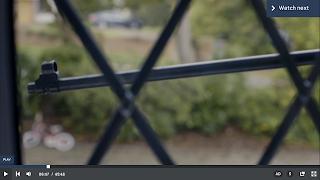Revision 6
"All genres exist and function through a process of repetition and difference" - Use Steve Neale's genre theory to explore this notion in Humans and Les Revenants [30]
D efinition A rgument C ontext
Neale argues that genre works through presenting a series of easily identifiable generic paradigms in order to attract and ensure their audience. However, in order for the market to avoid becoming saturated, they must include newer and different elements in order to vary content, therefore all media products are made of the repetition and difference of genre conventions. Both 'Humans' and 'Les Revenants' are typical yet atypical of their genres and this is to primarily target both a core and a niche audience. Using the example of 'Humans', the 2015 Channel 4 sci-fi remake of Swedish 'Real Humans', and 'Les Revenants', a French supernatural drama which aired on Canal+ in 2012, which is based on the 2004 film of the same name - which was also shown on Channel 4, extending to international audiences.
P oint E vidence A nalysis T heory
The overrunning genre of 'Les Revenants' is horror, and what makes this obvious is the use of over the shoulder and tracking shots of certain characters as well as using low-key lighting and non-diegetic music to build suspense and tension. One scene that does this well is the scene where Mr Costa is walking slowly to his kitchen after seeing Julie. The dark corridor and suspenseful music builds a proairetic code that we expect to be fulfilled by something gory, however the audience is left disappointed and confused when we simply see a woman eating pasta. This hermeneutic code leaves the audience wandering why he is so scared, subverting genre, and brings in the supernatural elements of the show, however this is not clear until later on in the episode. This becomes more clear through the stories of the individual characters and an ensemble cast. The use of hermeneutic code in this show is particularly effective as people are kept in suspense in order to carry on watching the show. This allows the audience to theorise and talk about what will occur within the rest of the episodes, and puts into effect Jenkin's theories of fandom and how an audience interacts with the media product. Each show follows a different character arc (although possibly not resolved) and means the audience is often left with many questions.
Another horror element to the show is Victor, who is a stereotypical representation of a typical horror film cliche of a staring and silent young child. Using intertextuality, we can see links with this and films such as 'The Shining'. The links between the twins and Victor's straight posture is incredibly clear, and we can see how they have taken this paradigm and used it to great effect within 'Les Revenants'. What makes this so creepy is the way that children are supposed to be innocent and cute, however he makes the audience uncomfortable by using Strauss' theories of binary opposition of a sweet child with the scary quietness and strange stillness of Victor's character.
P oint E vidence A nalysis T heory
It is clear within the show that it conforms to the sci-fi genre through the Synths, in particular the mise-en-scene of the character's eyes, and the way that they are advertised, bought and sold. Both Anita and Niska's storylines present a strong allegorical perspective on the way women are treated within society, in particular Anita's use as a stereotypical 'housewife' or maid and Niska's sex work. Not only is Anita hegemonically attractive with glossy hair and smooth skin, but she is also presented using an outdated stereotype of what women within the household should be, and although Laura feels like Anita is competition the father of the family puts his foot down and wants to keep her. This patriarchal control emphasises women's oppression, and the way that women are expected to act. Niska's narrative however is much more stark in displaying how women are viewed in society, as her time in the brothel brings into question elements of consent and also rape. The mise-en-scene of her costume makes her highly sexualised, and one of the closing scenes of the first episode uses a close up of her face whilst a man has sex with her in order to position the audience somewhere uncomfortable. Van Zoonen's theory of the male gaze is clear here, as she is being viewed only for her looks and her body - especially as robots are seen as objects within 'Humans' as they are bought and sold.
P oint E vidence A nalysis T heory
The overrunning genre of 'Les Revenants' is horror, and what makes this obvious is the use of over the shoulder and tracking shots of certain characters as well as using low-key lighting and non-diegetic music to build suspense and tension. One scene that does this well is the scene where Mr Costa is walking slowly to his kitchen after seeing Julie. The dark corridor and suspenseful music builds a proairetic code that we expect to be fulfilled by something gory, however the audience is left disappointed and confused when we simply see a woman eating pasta. This hermeneutic code leaves the audience wandering why he is so scared, subverting genre, and brings in the supernatural elements of the show, however this is not clear until later on in the episode. This becomes more clear through the stories of the individual characters and an ensemble cast. The use of hermeneutic code in this show is particularly effective as people are kept in suspense in order to carry on watching the show. This allows the audience to theorise and talk about what will occur within the rest of the episodes, and puts into effect Jenkin's theories of fandom and how an audience interacts with the media product. Each show follows a different character arc (although possibly not resolved) and means the audience is often left with many questions.
Another horror element to the show is Victor, who is a stereotypical representation of a typical horror film cliche of a staring and silent young child. Using intertextuality, we can see links with this and films such as 'The Shining'. The links between the twins and Victor's straight posture is incredibly clear, and we can see how they have taken this paradigm and used it to great effect within 'Les Revenants'. What makes this so creepy is the way that children are supposed to be innocent and cute, however he makes the audience uncomfortable by using Strauss' theories of binary opposition of a sweet child with the scary quietness and strange stillness of Victor's character.
P oint E vidence A nalysis T heory
It is clear within the show that it conforms to the sci-fi genre through the Synths, in particular the mise-en-scene of the character's eyes, and the way that they are advertised, bought and sold. Both Anita and Niska's storylines present a strong allegorical perspective on the way women are treated within society, in particular Anita's use as a stereotypical 'housewife' or maid and Niska's sex work. Not only is Anita hegemonically attractive with glossy hair and smooth skin, but she is also presented using an outdated stereotype of what women within the household should be, and although Laura feels like Anita is competition the father of the family puts his foot down and wants to keep her. This patriarchal control emphasises women's oppression, and the way that women are expected to act. Niska's narrative however is much more stark in displaying how women are viewed in society, as her time in the brothel brings into question elements of consent and also rape. The mise-en-scene of her costume makes her highly sexualised, and one of the closing scenes of the first episode uses a close up of her face whilst a man has sex with her in order to position the audience somewhere uncomfortable. Van Zoonen's theory of the male gaze is clear here, as she is being viewed only for her looks and her body - especially as robots are seen as objects within 'Humans' as they are bought and sold.



Comments
Post a Comment